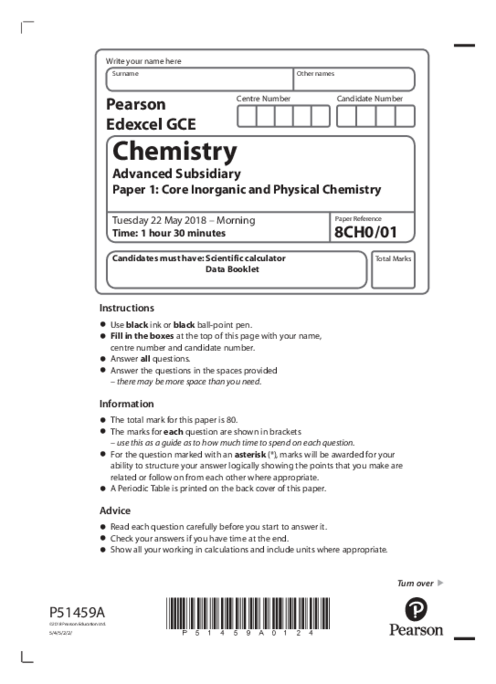Chemistry 8CH0/01 May June 2018
omer uner
1. Covalent Bonding and Molecular Shapes – Explanation of covalent bonding, lone pairs, and molecular geometry with examples such as ammonia and boron trifluoride.
2. Isotopes and Atomic Structure – Calculation of the number of subatomic particles in hydrogen isotopes and explanation of isotope differences.
3. Titration Calculations and Acid-Base Reactions – Determination of unknown concentration of potassium hydroxide using titration data and stoichiometric relationships.
4. Hydrated Salts and Water of Crystallization – Calculation of the number of water molecules in hydrated salts using experimental mass loss data.
5. Formation of Ionic Compounds and Isoelectronic Ions – Analysis of sodium fluoride formation, dot-and-cross diagrams, and ionic radius trends.
6. Intermolecular Forces and Boiling Points – Discussion of hydrogen bonding, dipole-dipole interactions, and van der Waals forces in molecules like methane, water, and hydrogen fluoride.
See More Paper 1 8 months ago
Chemistry (8CH0) Subject directory
All resources in one place
Related Past Papers
Related Tutorials
Crash report

